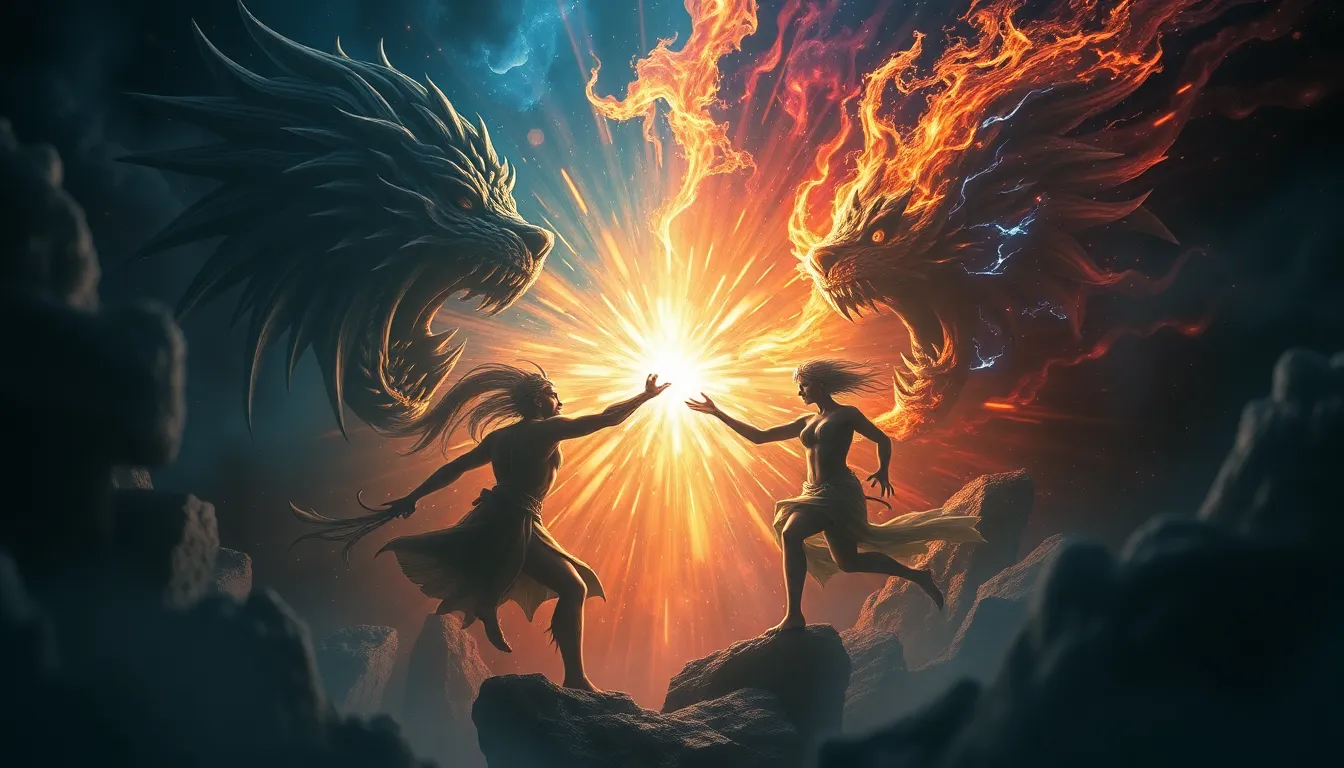The Cosmic Clash: The Most Dramatic Mythological Conflicts
Introduction to Mythological Conflicts
Mythological conflicts are epic narratives that depict battles between gods, heroes, and various cosmic forces. These stories often serve to explain the origins of the world, the nature of humanity, and the moral values of a culture. Through conflict, they explore themes of good versus evil, order versus chaos, and the balance of power. In this article, we will delve into some of the most dramatic mythological conflicts from various cultures, highlighting their significance and the lessons they impart.
The Titanomachy: The War Between Titans and Olympians
The Titanomachy is a foundational conflict in Greek mythology, representing the struggle between the Titans, led by Cronus, and the Olympian gods, led by Zeus. This epic war lasted for ten years and concluded with the defeat of the Titans, who were subsequently imprisoned in Tartarus.
Key figures in this conflict include:
- Cronus: The leader of the Titans who feared being overthrown by his children.
- Zeus: The youngest son of Cronus, who rallied the Olympians against their Titan oppressors.
- Hera, Poseidon, Demeter, Athena, and others: The Olympian gods who fought alongside Zeus.
The consequences of the Titanomachy were profound, leading to the establishment of the Olympian pantheon as the new rulers of the cosmos and the creation of a new world order, symbolizing the triumph of youth and innovation over stagnation and tyranny.
Ragnarök: The Norse Apocalypse
Ragnarök is a series of events in Norse mythology that foretells the end of the world, encompassing a great battle among gods, giants, and other creatures. This cataclysmic conflict involves several key figures:
- Odin: The chief god who seeks knowledge to prevent the impending doom.
- Thor: The thunder god known for his strength and his battle against the serpent Jörmungandr.
- Loki: The trickster god whose betrayal leads to chaos.
The significance of Ragnarök lies not only in the destruction it brings but also in the subsequent rebirth of the world. After the battle, a new age will emerge, symbolizing renewal and the cyclical nature of existence.
The Mahabharata: The Epic War of Kurukshetra
The Mahabharata is one of the longest epic poems in the world, detailing the great war of Kurukshetra between two branches of the same royal family: the Pandavas and the Kauravas. Central to this narrative are themes of dharma (duty) and morality in warfare.
Key characters include:
- The Pandavas: The five brothers who represent righteousness.
- The Kauravas: The hundred brothers who embody greed and ambition.
- Krishna: The divine charioteer who guides Arjuna, one of the Pandavas, in understanding his duty.
The Mahabharata explores the complexities of right and wrong in war, presenting moral dilemmas that resonate with the challenges of human existence.
The Battle of the Gods: Egyptian Mythology’s Duat Conflicts
In Egyptian mythology, the Duat is the realm of the dead and the afterlife. Conflicts among deities in this domain often symbolize the struggle between order and chaos. A notable conflict is between:
- Osiris: The god of the afterlife and resurrection.
- Set: The god of chaos who murders Osiris.
- Horus: The avenger of his father, Osiris, who battles Set for the throne.
This struggle illustrates the symbolic meanings of death and resurrection, emphasizing the Egyptians’ beliefs in the afterlife and the eternal cycle of life and death.
The Enuma Elish: The Babylonian Creation Epic
The Enuma Elish is a Babylonian creation myth that describes the rise of Marduk, the chief god, and his battle against Tiamat, the goddess of chaos. This epic outlines the creation of the world and the order established by the gods.
Key elements of the conflict include:
- Marduk: The hero who emerges as the champion of the younger gods.
- Tiamat: The primordial goddess who represents chaos and darkness.
The implications of Marduk’s victory are far-reaching, establishing him as the king of the gods and ensuring civilization’s order, representing humanity’s triumph over chaos.
The Ramayana: Good vs. Evil in Ancient India
The Ramayana is an ancient Indian epic that narrates the life of Prince Rama and his battle against the demon king Ravana. This narrative showcases the eternal struggle between good and evil, virtue and vice.
Key characters include:
- Rama: The embodiment of dharma and righteousness.
- Sita: Rama’s devoted wife whose abduction triggers the conflict.
- Ravana: The powerful demon king who represents evil and desire.
The Ramayana emphasizes themes of loyalty, justice, and the moral imperative to fight against oppression, solidifying its cultural significance in Indian society.
The War in Heaven: The Conflict Between Angels and Fallen Angels
The biblical narrative of the War in Heaven describes the conflict between God’s angels and the fallen angels, led by Lucifer. This celestial battle has profound theological implications for humanity.
Key figures include:
- Michael: The archangel who leads the heavenly hosts against the rebellion.
- Lucifer: The fallen angel who seeks to usurp God’s authority.
This conflict signifies the struggle between good and evil, with implications for the moral fabric of human existence and the nature of free will.
The Clash of Titans: African Mythologies
African mythologies are rich with conflicts that explain natural phenomena and embody cultural values. One notable example is the clash between Shango, the god of thunder, and Obatala, the god of purity and wisdom.
These conflicts serve to:
- Explain the forces of nature.
- Reinforce community values through moral lessons.
- Facilitate understanding of the human condition.
The cultural importance of these myths lies in their ability to unify communities and provide a framework for understanding the world around them.
Conclusion
Mythological conflicts are more than mere stories; they are reflections of human struggles, embodying the complexities of morality, power, and existence. From the Titanomachy to the Ramayana, each narrative provides unique insights into the values and beliefs of the cultures they originate from. These timeless tales continue to resonate, reminding us of the eternal battles fought within ourselves and society.



